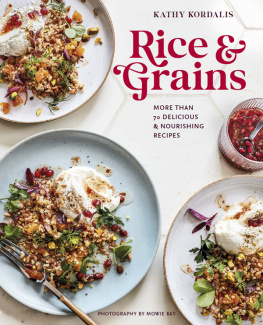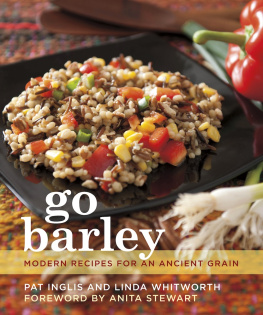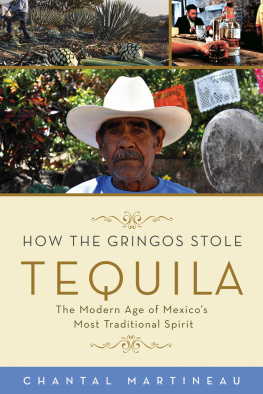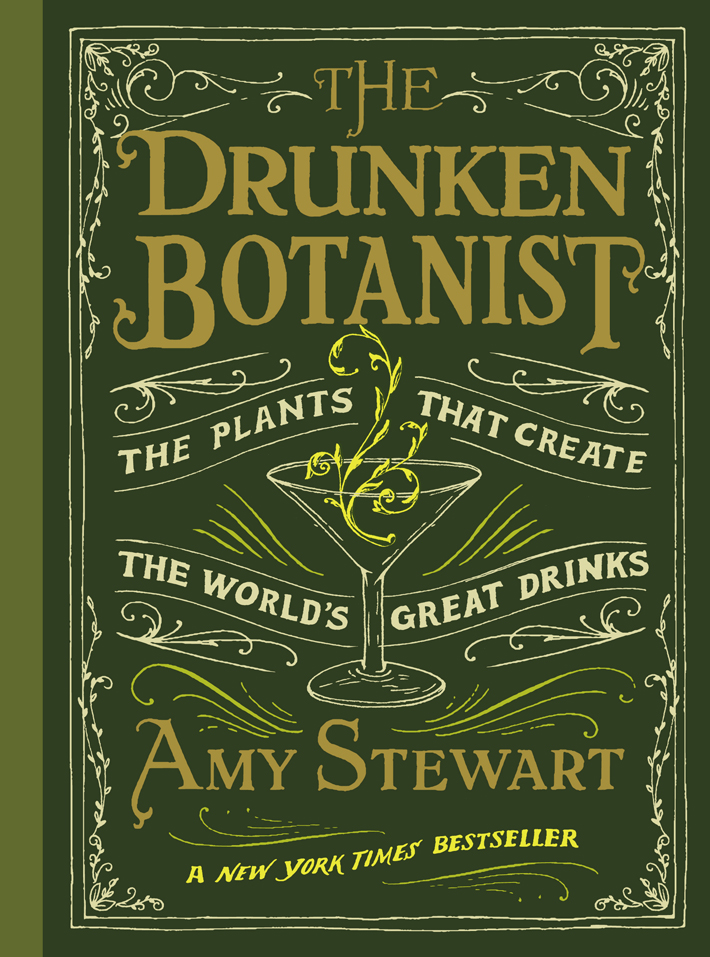
also by amy stewart
From the Ground Up: The Story of a First Garden
The Earth Moved:
On the Remarkable Achievements of Earthworms
Flower Confidential:
The Good, the Bad, and the Beautiful
Wicked Plants:
The Weed that Killed Lincolns Mother & Other Botanical Atrocities
Wicked Bugs:
The Louse that Conquered Napoleons Army & Other Diabolical Insects
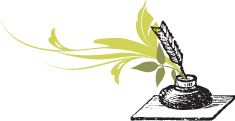

to PSB

contents
We explore the twin alchemical processes of fermentation and distillation, from which wine, beer, and spirits issue forth.
Proceeding in an Orderly Fashion through the Alphabet:
Then Moving onto a Sampling of More Obscure Sources of Alcohol from around the World:
We then suffuse our creations with a wondrous assortment of natures bounty.
At last we venture into the garden, where we encounter a seasonal array of botanical mixers and garnishes to be introduced to the cocktail in its final stage of preparation.
Sorted in a Similar Fashion, including Recipes and Sufficient Horticultural Instruction:
Some Final Business:
recipes
COCKTAILS
SYRUPS, INFUSIONS, AND GARNISHES
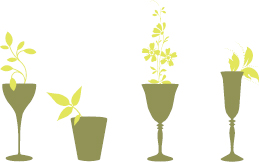

APERITIF
The inspiration for this book came from a chance encounter at a convention of garden writers in Portland, Oregon. I was sitting in a hotel lobby with Scott Calhoun, an agave and cactus expert from Tucson. Someone had just given him a bottle of Aviation, a fine locally made gin. Im not much of a gin drinker, he said. I dont know what to do with this.
I knew what to do with it.
Ive got a drink recipe that will make you love gin, I said. He looked doubtful, but I continued. Were going to need fresh jalapeos, some cilantro, a few cherry tomatoes...
Stop, he said. Thats enough. Im in. No one from Tucson can resist a jalapeo-based cocktail.
We spent the afternoon running around Portland, gathering our ingredients. On the way, I subjected Scott to my rant on the many virtues of gin. How can anyone with even a passing interest in botany not be fascinated by this stuff? I said. Look at the ingredients. Juniper! Thats a conifer. Coriander, which is, of course, the fruit of a cilantro plant. All gins have citrus peel in them. This one has lavender buds, too. Gin is nothing but an alcohol extraction of all these crazy plants from around the worldtree bark and leaves and seeds and flowers and fruit. We had arrived at the liquor store by then, and I was gesturing wildly at the shelves around us. This is horticulture! In all of these bottles!
I hunted for the ingredient I neededproper tonic water, made with actual cinchona bark and real Saccharum officinarum, not that artificial junkwhile Scott browsed the selection of bottled Agave tequilana. He was in the habit of trekking into Mexico in search of rare agave and cactus, and hed encountered many of his prized specimens coming out of the working end of a handmade Oaxacan still.
Before we left, we stood in the doorway for a minute and looked around us. There wasnt a bottle in the store that we couldnt assign a genus and species to. Bourbon? Zea mays, an overgrown grass. Absinthe? Artemisia absinthium, a much-misunderstood Mediterranean herb. Polish vodka? Solanum tuberosuma nightshade, which is a weird family of plants if there ever was one. Beer? Humulus lupulus, a sticky climbing vine that happens to be a close cousin to cannabis. Suddenly we werent in a liquor store anymore. We were in a fantastical greenhouse, the worlds most exotic botanical garden, the sort of strange and overgrown conservatory we only encounter in our dreams.
The cocktail (Mamani Gin & Tonic, ) was a hit with the garden writers. Scott and I signed copies of our books in our publishers booth that night, and we took turns putting down our pens to slice peppers and muddle cilantro. The broad outlines of this book were conceived right then, over two or three of those decidedly botanical cocktails. I should dedicate this to the person who gave Scott that bottle of Aviationif only either of us could remember who it was.
In the seventeenth century, British scientist Robert Boyle, one of the founders of modern chemistry, published his Philosophical Works, a three-volume treatise on physics, chemistry, medicine, and natural history. He understood perfectly the connection between booze and botany, which fascinates me as well. Here is an abridged version of his take on the subject:
The inhabitants of Carribbe islands supply us with remarkable instances hereof where the poisonous root Mandiboca is converted into both bread and drink: by being chewd, and spit out into water, it soon purges itself of its noxious quality. They, having in some of our American plantations, found it very difficult to make good malt of maiz or Indian corn, they first reduce it to bread, and afterwards brew a very good drink from it. In China, they make their wine from barley; in the northern parts thereof, from rice and apples. In Japan, also they prepare a strong wine from rice. We in England, likewise, have great variety of wines from cherries, apples, pears, &c. little inferior to those of foreign growth. In Brazil, and elsewhere, they make strong wine of water and sugarcane: and in Barbadoes they have many liquors unknown to us. Among the Turks, where wine of the grape is forbid by their law, the Jews and Christians keep, in their taverns, a liquor made of fermented raisins. The Sura in the East-Indies is made of the juice that flows from the cocoa-tree; and sailors have often been inebriated, in that country, with the liquors made of the fermented juices obtaind by the incision of vegetables.
And so on. Around the world, it seems, there is not a tree or shrub or delicate wildflower that has not been harvested, brewed, and bottled. Every advance in botanical exploration or horticultural science brought with it a corresponding uptick in the quality of our spirituous liquors. Drunken botanists? Given the role they play in creating the worlds great drinks, its a wonder there are any sober botanists at all.
With this book, I hope to offer a plants-eye perspective on booze and to supply a little history, a little horticulture, and even some agricultural advice for those of you who want to grow your own. I begin with the plants we actually turn into alcohol, such as grapes and apples, barley and rice, sugarcane and corn. Any of them can, with the help of yeast, be transformed into molecules of intoxicating ethyl alcohol. But thats only the beginning. A great gin or a fine French liqueur is flavored with innumerable herbs, seeds, and fruit, some of them added during distillation and some just before bottling. And once a bottle gets to the bar, a third round of plants are called into service: mixers like mint, lemon, andif the partys at my housefresh jalapeo. I structured the book around this journey from mash tub and still, to bottle, to glass. Within each section, the plants are arranged in alphabetical order by their common name.
Next page


